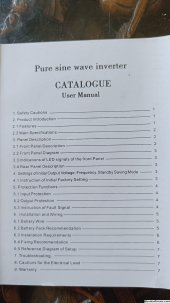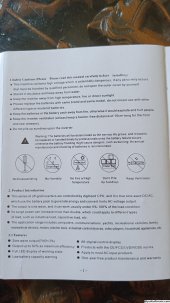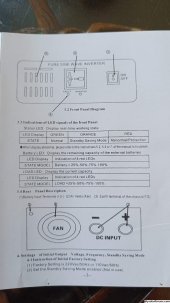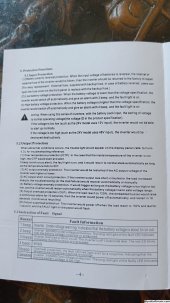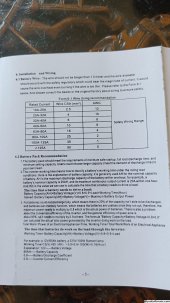Hi,
I'm playing with a small solar system, to get familiar with the concept, and later expand the system as I progress.
The system is not connected to the grid, and is totally separated.
Right now my system is made of:
3x100W solar panels in parallel(3 to 1 mc4 connector).
SRNE MPPT 40a/100v 12/24v.
Cheap 1500/3000W 12V to 220V inverter.
3 circuit breakers.
Busbars.
100a 12v gel battery.
Charge Flow is: solar panels -> 63a MCB(on both N/P) -> MPPT -> 50a thermal breaker(on positive) -> busbar -> 150a thermal breaker(on positive) -> battery.
Discharge flow is: Battery -> 150a thermal breaker(on positive) -> busbar -> inverter.
I want to understand what safety measures I need to take on the DC & AC sides to. avoid electric shock(mainly on the AC side).
A few notes:
The inverter has no grounding port, and I've opened the case and saw that only two wires are connected to the AC outlet output.
My area is not usually in lightning danger.
I want to upgrade the system(add on more battery in series, and replace the inverter) to 24v in the near future).
I'm a beginner, so maybe some of the info above my be confusing.
Your help is much appreciated.
I'm playing with a small solar system, to get familiar with the concept, and later expand the system as I progress.
The system is not connected to the grid, and is totally separated.
Right now my system is made of:
3x100W solar panels in parallel(3 to 1 mc4 connector).
SRNE MPPT 40a/100v 12/24v.
Cheap 1500/3000W 12V to 220V inverter.
3 circuit breakers.
Busbars.
100a 12v gel battery.
Charge Flow is: solar panels -> 63a MCB(on both N/P) -> MPPT -> 50a thermal breaker(on positive) -> busbar -> 150a thermal breaker(on positive) -> battery.
Discharge flow is: Battery -> 150a thermal breaker(on positive) -> busbar -> inverter.
I want to understand what safety measures I need to take on the DC & AC sides to. avoid electric shock(mainly on the AC side).
A few notes:
The inverter has no grounding port, and I've opened the case and saw that only two wires are connected to the AC outlet output.
My area is not usually in lightning danger.
I want to upgrade the system(add on more battery in series, and replace the inverter) to 24v in the near future).
I'm a beginner, so maybe some of the info above my be confusing.
Your help is much appreciated.



